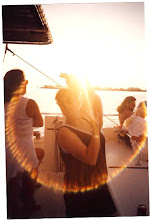
Book Press.
Book Type/Pages:
Picure/40
Grade Level:
This book is appropriate for grades kindergarten through fifth.
Curriculum Links:
This book could be used during social studies instruction.
Author Credibility:
Although Mordicai Gerstein is primarily an artist, he has written several children’s books. In the acknowledgment in this book, he states that he did not witness the famous walk between the towers. He sources for this book are articles from The New Yorker, The New York Post, The Daily News, and a book written by Petit, To Reach the Clouds.
Awards:
2004 Caldecott Award
Book Summary:
This book is about a street performer named Philippe Petit that walked across a wire suspended between the Twin Towers in New York City in 1974. Philippe had once walked between the steeples of Notre Dame Cathedral in Paris and decided to do the same in New York. The towers were not yet completed, but Philippe and some friends disguised themselves as construction workers and snuck in. They spent all night preparing for the walk, with most of the time spent on securing the wire, which was seven-eighths of an inch thick, between the towers. They accomplished this by using arrows. Philippe completed the walk, having lots of fun in the meantime, and was taken away in handcuffs.
National/State Standards:
The social studies standards addressed are Individual Development and Identity and People, Places, and Environments.
Illustrations/Graphics:
The illustrations are done by the author, Mordicai Gerstein. The overall sense that is obtained from these illustrations are whimsy and fun. The illustrations almost have a cartoon like feel. The Twin Towers are very clear in the illustrations, giving them center stage as one of the main characters in the story. Illustrations vary per page. Several small ones occur on a page next to a full page illustration. Twice within the book, the illustrations are on fold out pages to give the reader a feel for the height of the Twin Towers. The illustrations make this a fun story to read.
Access Features:
Important access features in this book are an acknowledgment and two fold out illustrations.
Use in My Classroom:
I would use this book in my classroom as a part of a unit on the events of September 11th. Another use would be in a study performance artists.
My Response to the Book:
I thought this was a fun book. The illustrations were bright and cheerful and the two fold out pages were a surprise. I was surprised to find that the wire suspended between the two towers was only seven-eighths of an inch! I can only imagine that the wind at such heights made this a very frightening walk. I especially liked the part where the book mentions that Philippe even laid down on the rope as people were on the roofs of the towers waiting for him to finish his famous walk. I know my students will enjoy this book.
Related Texts:
Books about September 11th:
September 11th: A Simple Account for Children by Nancy Poffenberger
Tower Stories: The Autobiography of September 11th by Damon DiMarco
The Day That Was Different: September 11, 2001: When Terrorists Attacked America by
Carole Marsh
September Roses by Jeanette Winter
What Will You Do for Peace?: Impact of 9/11 on New York City Youth by Faith
Ringgold



















1 comment:
The artist's use of perspective in the illustrations really give the viewer/reader a sense of how high Philippe was when he walked between the towers.
Post a Comment